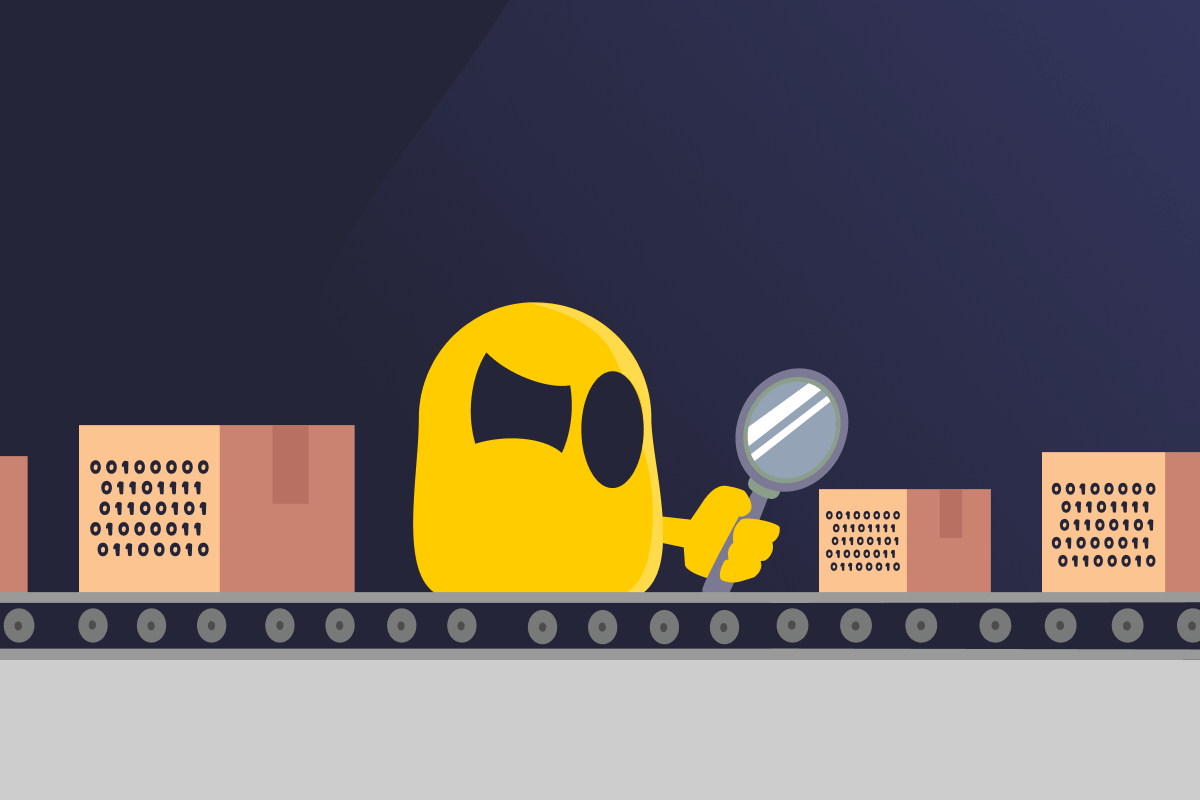Datagram

Datagram Definition
A datagram is a packet of data transferred across a network. It carries all the information necessary to send it between two points. Each datagram transmits independently from others and can take a different route from source to destination.
Think of it like sending a bunch of letters in the mail. Even if you address all the letters to the same house, the post office can send them out in any order and with different delivery routes. Datagrams work the same way. They go out separately and take their own path through the network. They don’t even have to establish a connection with their destination before being sent, which helps them transfer data fast.
How Datagrams Work
A datagram consists of two parts: the payload and the header. The payload is simply the data you’re sending or receiving, such as a video segment or a message. The header contains all the information needed to send the packet to the right place, like the source, destination, and payload details.
First, the sender device splits up the data into smaller packets called datagram payloads. Then, it writes each datagram’s header and addresses it to the receiver. The datagrams enter the network and go their own way. The sender device doesn’t typically check if the receiver device actually got the data. This saves time, making datagrams a fast way to transmit data.
Protocols that commonly use datagrams include IP, which handles delivery across networks; UDP (User Datagram Protocol), which provides fast, connectionless transport; and RTP (Real-time Transport Protocol), which is used in streaming and VoIP applications to add timing and sequencing information.
What Are Datagrams Used For?
Datagrams are usually used for online activities where speed is very important, such as:
- Video and audio live-streaming
- VoIP (Voice over IP) services, like Zoom, Google Voice, or WhatsApp
- Online gaming, especially in multiplayer real-time games
In all of these situations, some packet loss is acceptable in exchange for fast transmission. For example, you might encounter minor visual glitches or audio crackling because some datagrams got lost on the way.
Advantages of Datagrams
- Quick transmission: Datagrams don’t require the sender and receiver to establish a connection. This means datagrams travel fast, so they’re especially suitable for streaming or gaming.
- Free sending order: Other methods of data transfer force the sender to wait for a packet to reach the receiver before sending the next one. A datagram doesn’t depend on other packets arriving before or after it.
- Lightweight: A datagram’s header is smaller than other types of packets. This means it doesn’t take up so much of a network’s bandwidth.
Disadvantages of Datagrams
- No guarantee of arrival: The sender doesn’t check if the receiver is available and able to accept the sent datagrams. That means there’s always a chance of some packet loss.
- No sequence: Datagrams don’t necessarily arrive in the same order the sender transmitted them. The receiver device must know how to reassemble the datagrams in the right order.
- No congestion control: Every datagram has the whole destination address and doesn’t “pay attention” to other datagrams transmitting. This can cause network congestion if the receiver is overwhelmed by too many datagrams arriving at once.
Read More:
- What Is a Data Packet?
- What Is a Packet-Switched Network?
- TCP vs UDP Comparison: Does Speed Trump Security?
FAQ
Datagrams are used for what’s called “connectionless communication.” This is a method of data transfer in which the sender and receiver don’t establish a connection beforehand. The sender doesn’t know if the receiver is actually available and ready to receive the data. Instead, every datagram has the receiver’s address and travels through the network independently.
In connection-oriented communication, such as with TCP, the sender and receiver establish a connection first. Each packet still includes addressing information, but the connection ensures that data is delivered in order and without loss. This makes the transfers more reliable but often slower.
Not entirely. Datagrams are fast, but sending one doesn’t involve checking if the receiver device can receive it. This means datagrams can’t guarantee they’ll arrive at the destination or arrive in the proper order. If there’s congestion or a network dropout, they might not arrive at all.
However, datagrams are still useful when speed is more important than transferring all data correctly. For example, live streaming and online gaming require fast speeds. Even if a few datagrams are lost along the way, you’ll just hear some small audio disruptions or see minor visual glitches.
Yes, but it’s not the best method. Datagrams don’t guarantee 100% of the data will be transmitted properly. You’d only use them for file transfer in situations where minor data losses are acceptable or the files you’re sending are so small that it’s unlikely you’ll have packet loss.
No. UDP is a protocol that uses datagrams for transmission. A datagram is a type of data packet, and multiple protocols (including UDP and IP) use them.

 45-Day Money-Back Guarantee
45-Day Money-Back Guarantee